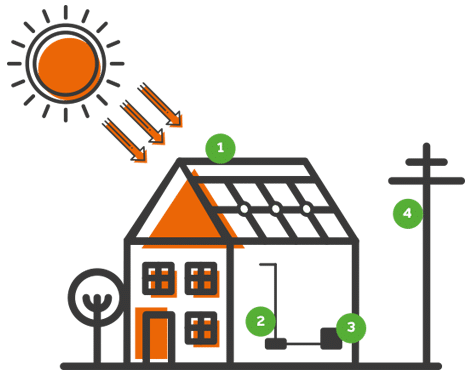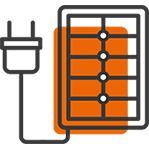Solar panels convert sunlight into energy that can be used to power your home. Residential solar systems are based on a proven technology that recent advances have made dramatically more efficient and affordable. There are four main elements of a solar system, two of which are already part of your home.

Converts sunlight into
Direct Current electricity.
Converts DC to AC electricity,
making it usable in your home.
Converted energy will then support
the electrical needs of your home.
Excess power produced flows into
grid, your account is credited

Solar power is based on a technology called photovoltaic (PV) cells. Solar panels are made up of many PV cells. They generate electricity by absorbing sunlight.

Solar panels turn energy from the sun into a type of electricity called Direct Current (DC). The DC current is sent to a Solar Inverter, which turns it into Alternating Current (AC), which is used to power your home.

AC electricity is sent to power your home through a connection installed between your main electrical panel and your new solar system.

Solar systems are also connected to your electric meter. It measures the electricity your solar system sends to the grid, and that your home draws from it.
Review the home solar readiness guidelines to see if you qualify.
qualify for solarSee answers to the questions homeowners ask when considering residential solar panels.
read the faqsReview information from solar industry organizations on terminology, regulations and incentives.
learn more
Learn about installation, financing options and how you can save on utilities.
calculate solar cost
Get an instant estimate for your location with our Solar Savings Calculator.
Discover savings